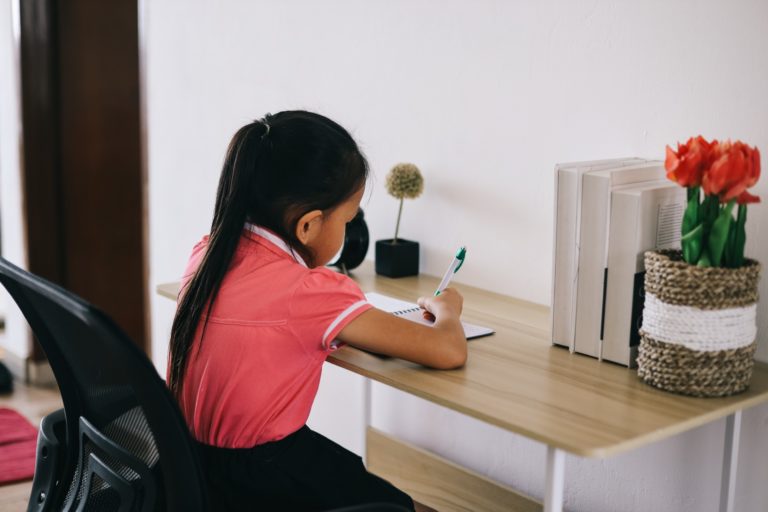Uncovering the Stats: How Many Students are Homeschooled?
Hey there, fellow knowledge seekers! 🌟 Today, we’re taking a deep dive into the captivating universe of homeschooling.
Ever caught yourself pondering just how many kids are learning from their cozy homes across the US?
You’ve hit the jackpot because I’ve gathered all the freshest stats, fun facts, latest trends, and juicy demographics about homeschooling! 📊📚
So, buckle up, and let’s embark on this enlightening journey together! 🚀📖
Key Takeaways:
- Homeschooling is on the rise, with 5.4% of children reported to be homeschooled in the 2020-2021 school year.
- There was a drop in homeschooling rates from 2012 to 2019, but it has been steadily increasing since then.
- White students have the highest homeschooling rate at 4.0%, followed by Hispanic students at 1.9% and Black students at 1.2%.
- Top reasons for homeschooling include dissatisfaction with traditional school instruction and concerns for a child’s safety.
- Homeschooled students often perform well academically, scoring higher on standardized tests and having higher graduation rates.
Now that we have a glimpse of the stats, let’s explore the reasons parents choose homeschooling, the academic performance of homeschooled students, the impact of the COVID-19 pandemic, the demographics of homeschooling families, the concerns and challenges involved, state and regional variances, and the pros and cons of this alternative education method.
Reasons for Homeschooling
There are numerous reasons why parents choose homeschooling as an alternative to traditional schooling.
As a parent myself, I understand the importance of making the best decision for my child’s education.
Here are some key motivations behind the choice to homeschool:
- Dissatisfaction with academic instruction: Many parents opt for homeschooling because they feel that traditional schools do not provide the level of academic instruction they desire for their child. By homeschooling, they have the freedom to tailor the curriculum to their child’s specific needs and learning style.
- Concerns for child’s safety: Safety concerns are another significant factor in choosing homeschooling. Some parents worry about bullying, violence, or other negative influences present in traditional schools. By homeschooling, they can create a safe and nurturing learning environment for their child.
- Desire for personalized education: Homeschooling allows for personalized education, where parents can focus on their child’s individual strengths and weaknesses. This tailored approach can lead to increased academic success and a deeper love for learning.
In addition to these main reasons, other factors contribute to the decision to homeschool.
Parents appreciate the opportunity to address their child’s unique needs effectively. Homeschooling offers flexibility in scheduling, allowing families to adapt their routines to fit their individual circumstances.
Furthermore, homeschooling provides the chance for children to explore their interests and passions fully.
Advantages of Homeschooling
There are several advantages to homeschooling that parents consider when making this choice:
- Tailored instruction: Homeschooling allows parents to customize the curriculum and teaching methods to suit their child’s unique needs and learning style, promoting a more effective and engaging education.
- Strong family bonds: Homeschooling provides an opportunity for parents and children to spend quality time together, fostering stronger family relationships and creating a supportive learning environment.
- Promotes self-motivation: Homeschooling encourages children to take responsibility for their own learning and develop self-motivation skills, setting them up for success in higher education and beyond.
While homeschooling has its benefits, it’s essential to weigh the pros and cons carefully. Each family’s situation is unique, and what works for one may not work for another.
However, having a clear understanding of the reasons and advantages associated with homeschooling can help parents make an informed decision based on their child’s individual needs and circumstances.
Academic Performance of Homeschooled Students

A graph displaying the number of homeschooled students in the US over time. The line should be gradually increasing, indicating a growth in popularity of homeschooling.
Superimposed on the graph are several bar charts showing the academic performance of homeschooled students compared to their traditionally-schooled peers. The bars for homeschoolers should be consistently higher, indicating superior academic achievement.
The color scheme should be bright and colorful, with blue and green denoting positive performance and red and yellow denoting negative performance.
When it comes to academic performance, homeschooling has shown promising results.
Research indicates that homeschooled students tend to excel academically compared to their counterparts in traditional schools.
Standardized test scores reveal that homeschooled students typically score between 15 and 30 percentile points higher than their traditionally schooled peers.
This higher academic performance could be attributed to several factors.
Homeschooling allows for personalized education, tailored to each student’s specific needs and learning style.
With one-on-one instruction, homeschoolers receive individual attention, which fosters a deeper understanding of subjects and encourages self-motivation in learning.
Furthermore, homeschooling may provide a flexible and adaptable learning environment.
Without the constraints of a rigid classroom structure, students can delve into subjects that interest them and set their own pace of learning.
This freedom to explore their passions often leads to a more engaged and enthusiastic approach to education.
Homeschooling Trends during the COVID-19 Pandemic
As the COVID-19 pandemic swept across the globe, it had a profound impact on education systems worldwide.
Many parents found themselves navigating the challenges of remote learning and exploring alternative options for their children’s education.
This unprecedented situation led to a significant increase in homeschooling as parents sought to ensure the continuity of education while prioritizing the health and safety of their families.
The pandemic brought homeschooling into the spotlight, with more families realizing its potential as a viable educational choice.
A study conducted by the National Home Education Research Institute found that homeschooling increased by at least 12% since 2019, indicating a significant shift in educational preferences.
Parents were increasingly drawn to the flexibility and control that homeschooling offered, allowing them to tailor education to their child’s individual needs and circumstances.
The COVID-19 pandemic also resulted in a shift in perception towards homeschooling. A national poll by EdChoice revealed that 60% of parents had a more favorable opinion of homeschooling as a result of the pandemic.
This attitudinal change highlights the growing recognition of homeschooling as a legitimate and effective educational option.
Homeschooling Demographics: Exploring the Diversity of Homeschooling Families

A peaceful countryside scene with a rustic wooden farmhouse in the distance and children playing outside.
The children are dressed in comfortable, practical clothing and are engaged in various activities, such as gardening, caring for livestock, and reading books.
The sun is shining down on the fields, and there are rolling hills in the background. The overall feel of the image is one of simplicity, tranquility, and wholesome family values.
When examining the demographics of homeschooling families, we find a diverse range of backgrounds and circumstances.
Homeschooling rates vary among different demographic groups, shedding light on the various factors that influence this educational choice.
One significant aspect to consider is income. Surprisingly, higher-income families have lower participation rates in homeschooling compared to lower-income families.
This suggests that homeschooling may be a viable option for families seeking an alternative to traditional schooling, regardless of their socioeconomic status.
Race and ethnicity also play a role in homeschooling rates. In 2019, White students had the highest homeschooling rate at 4.0%, followed by Two or more races (2.7%), Hispanic (1.9%), and Black (1.2%) students.
These statistics highlight the importance of understanding the unique perspectives and experiences of homeschooling families across different racial and ethnic backgrounds.
Homeschooling in Rural Areas
Another interesting trend in homeschooling demographics is its prevalence in rural areas.
Approximately 4.7% of homeschooling students reside in rural households.
This suggests that families living in rural communities may choose homeschooling as a way to provide their children with quality education in a more personalized and accessible environment.
Overall, the demographics of homeschooling families reveal the diverse range of individuals who have embraced this educational approach.
It is important to recognize and celebrate the unique perspectives and experiences that each family brings to the homeschooling community.
Concerns and Challenges of Homeschooling
As a homeschooling parent, I understand that while there are numerous benefits to this educational choice, there are also concerns and challenges that need to be addressed.
One of the common concerns is socialization, as some worry that homeschooled children may not have as many opportunities to interact with peers.
However, it’s important to note that there are various ways to address this, such as participating in co-op programs, joining homeschooling groups, and enrolling in extracurricular activities like sports or music lessons.
Another challenge that many parents face is finding a balance between work and homeschooling.
Juggling teaching responsibilities with other commitments can be demanding, but with careful planning and time management, it is possible to create a schedule that works for both.
In some cases, parents may also need to explore alternative work arrangements or seek support from family members or tutors to ensure a smooth balance.
Overcoming Challenges
- Concerns about socialization can be addressed through co-op programs, homeschooling groups, and extracurricular activities.
- Finding a balance between work and homeschooling requires careful planning and time management.
- Parents may need to explore alternative work arrangements or seek support from family members or tutors to manage their commitments effectively.
Additionally, parents may feel uncertain about their ability to provide a comprehensive education at home, especially if they do not have a background in teaching.
However, there are countless resources available, including online curricula, educational websites, and support networks, that can help parents navigate the educational journey and ensure their child receives a well-rounded education.
It’s important to acknowledge and address these concerns and challenges proactively to create a positive homeschooling experience for both parents and children.
By finding solutions, seeking support, and utilizing available resources, parents can overcome the challenges and provide a rewarding educational experience for their children.
Homeschooling by State and Regional Variances

Create an image that represents the differences in homeschooling statistics across different regions and states.
Use color to differentiate the regions, and depict the overall trend in homeschooling rates through the use of graphs or charts.
Show the relative popularity of homeschooling in each state, without using numbers or percentages.
Use symbols or other imagery to represent each state and its homeschooling community.
Depict any notable regional differences or trends in homeschooling, such as higher rates in rural areas or lower rates in urban centers.
Remember to keep the image visually engaging and easy to understand without any text or captions.
When it comes to homeschooling, rates can vary significantly across different states in the United States. Each state has its own unique demographics, culture, and policies that influence the homeschooling landscape.
In some states, homeschooling participation rates can be less than 5%, while in others, it can be over 9%.
These variations highlight the diversity and options available to families seeking alternative education for their children.
Factors Influencing Homeschooling Rates
The variance in homeschooling rates can be attributed to several factors. One of the key factors is the state’s homeschooling policy.
States that have more favorable conditions and support for homeschooling, such as easier regulations and access to resources, often see higher participation rates.
On the other hand, states with stricter regulations or limited resources may have lower participation rates.
Demographics also play a role in homeschooling rates. The preferences, values, and educational philosophies of families in different regions can impact the decision to homeschool.
Additionally, cultural and religious factors may also contribute to regional variances in homeschooling rates.
Homeschooling Policies and Regulations
It is important to note that each state has its own set of homeschooling policies and regulations.
These policies can range from minimal requirements, such as submitting annual notifications or assessments, to more stringent regulations that involve regular evaluations and curriculum approval.
Parents who are considering homeschooling should familiarize themselves with the specific policies in their state to ensure compliance and make informed decisions.
In conclusion, homeschooling rates can vary significantly across different states and regions in the United States.
Factors such as homeschooling policies, demographics, and cultural influences contribute to these regional differences.
It is essential for families considering homeschooling to understand the policies and regulations in their respective states to ensure a successful homeschooling experience.
Pros and Cons of Homeschooling

A family gathered around a table with textbooks and notebooks, surrounded by plants and natural light.
When it comes to homeschooling, there are both pros and cons to consider. As a parent, it’s important to weigh these factors before making a decision.
Here are some of the benefits and drawbacks of homeschooling:
Benefits of Homeschooling:
- Personalized Education: Homeschooling allows for tailored instruction to meet the individual needs and learning styles of each child.
- Flexible Scheduling: Homeschooling offers the flexibility to create a schedule that works best for the family, allowing for field trips, extracurricular activities, and accommodating any specific needs.
- Strong Family Bonds: Homeschooling provides an opportunity for families to spend more time together and foster close relationships.
- Individual Attention: With homeschooling, children receive one-on-one attention from their parents, allowing for focused instruction and support.
- A Safe and Nurturing Environment: Homeschooling can provide a safe and nurturing environment for children, free from bullying, peer pressure, or other negative influences.
Drawbacks of Homeschooling:
- Socialization Opportunities: Homeschooling may limit socialization with peers, although there are various ways to address this through local homeschooling groups, co-ops, and community activities.
- Specialized Knowledge: Parents taking on the role of educator need to possess strong knowledge in various subjects or be willing to seek out resources and support to provide a comprehensive education.
- Time Management and Work-Life Balance: Homeschooling requires effective time management and balancing teaching responsibilities with other commitments, such as work or household duties.
As you consider homeschooling, carefully evaluate these pros and cons, taking into account your child’s needs, your own capabilities, and the availability of resources and support.
Homeschooling can offer many benefits, but it also requires commitment, dedication, and careful planning to ensure a successful educational experience for your child.
Homeschooling Trends Beyond the Pandemic

As we move beyond the challenging times of the COVID-19 pandemic, homeschooling continues to emerge as a prominent and enduring trend in education.
The impact of the pandemic has sparked a greater interest among parents in exploring diverse approaches to education and seeking more control over their child’s learning journey.
Post-pandemic homeschooling is not just a temporary solution but a long-term choice for many families.
The desire for personalized and tailored instruction, flexible scheduling, and the ability to cater to the unique needs and interests of each child remains strong.
Parents recognize the benefits of homeschooling, such as fostering strong family bonds, promoting self-motivation, and providing a safe and nurturing environment.
These evolving homeschooling trends call for policymakers to take notice and provide necessary support and resources for families.
It is crucial to acknowledge that homeschooling has become a viable alternative to traditional schooling, and families should have access to the tools and guidance they need to navigate this educational path effectively.
Looking ahead, it is evident that the landscape of education is diversifying. Homeschooling is no longer an outlier but an integral part of the educational options available to families.
As we embrace these changes, it is essential to foster an inclusive and supportive environment where families can confidently choose the educational approach that best suits their children’s needs.
FAQ
How many students are homeschooled?
According to data from the National Household Education Survey (NHES), 5.4% of children were reported to be homeschooled in the 2020-2021 school year.
What are the top reasons for homeschooling?
The top three reasons parents choose homeschooling are dissatisfaction with academic instruction in traditional schools, concerns for their child’s safety, and a desire for personalized education.
How do homeschooled students perform academically?
Research has shown that homeschooled students typically score between 15 and 30 percentile points higher on standardized tests compared to students in traditional schools. Graduation rates for homeschooled students may also be higher, with approximately 66.7% of homeschooled students going on to graduate from college.
Did homeschooling increase during the COVID-19 pandemic?
Yes, homeschooling increased by at least 12% since 2019 due to the COVID-19 pandemic, according to a study by the National Home Education Research Institute. A national poll by EdChoice also revealed that 60% of parents had a more favorable opinion of homeschooling due to the pandemic.
Which demographic groups have higher homeschooling rates?
White students had the highest homeschooling rate at 4.0%, followed by Two or more races (2.7%), Hispanic (1.9%), and Black (1.2%) students. Homeschooling is also more prevalent in rural areas, with 4.7% of homeschooling students residing in rural households.
What are the concerns and challenges of homeschooling?
Some concerns include managing time effectively, balancing work commitments with teaching responsibilities, socialization, and maintaining current relationships. Additionally, parents may feel uncertain about their ability to provide a comprehensive education at home.
How does homeschooling vary across states?
Homeschooling rates can vary significantly across states, with estimates ranging from less than 5% to over 9%. These differences may be influenced by demographics, culture, and policy.
What are the pros and cons of homeschooling?
Homeschooling offers personalized education, flexible scheduling, strong family bonds, individual attention, and a safe and nurturing environment. However, it may limit socialization opportunities, require specialized knowledge from parents, and pose challenges in terms of time management and work-life balance.
Are homeschooling trends expected to continue beyond the pandemic?
Yes, parents’ interest in diverse learning options and the desire for more control over their child’s education have been increasing, suggesting that homeschooling trends may persist even as the COVID-19 pandemic recedes.







